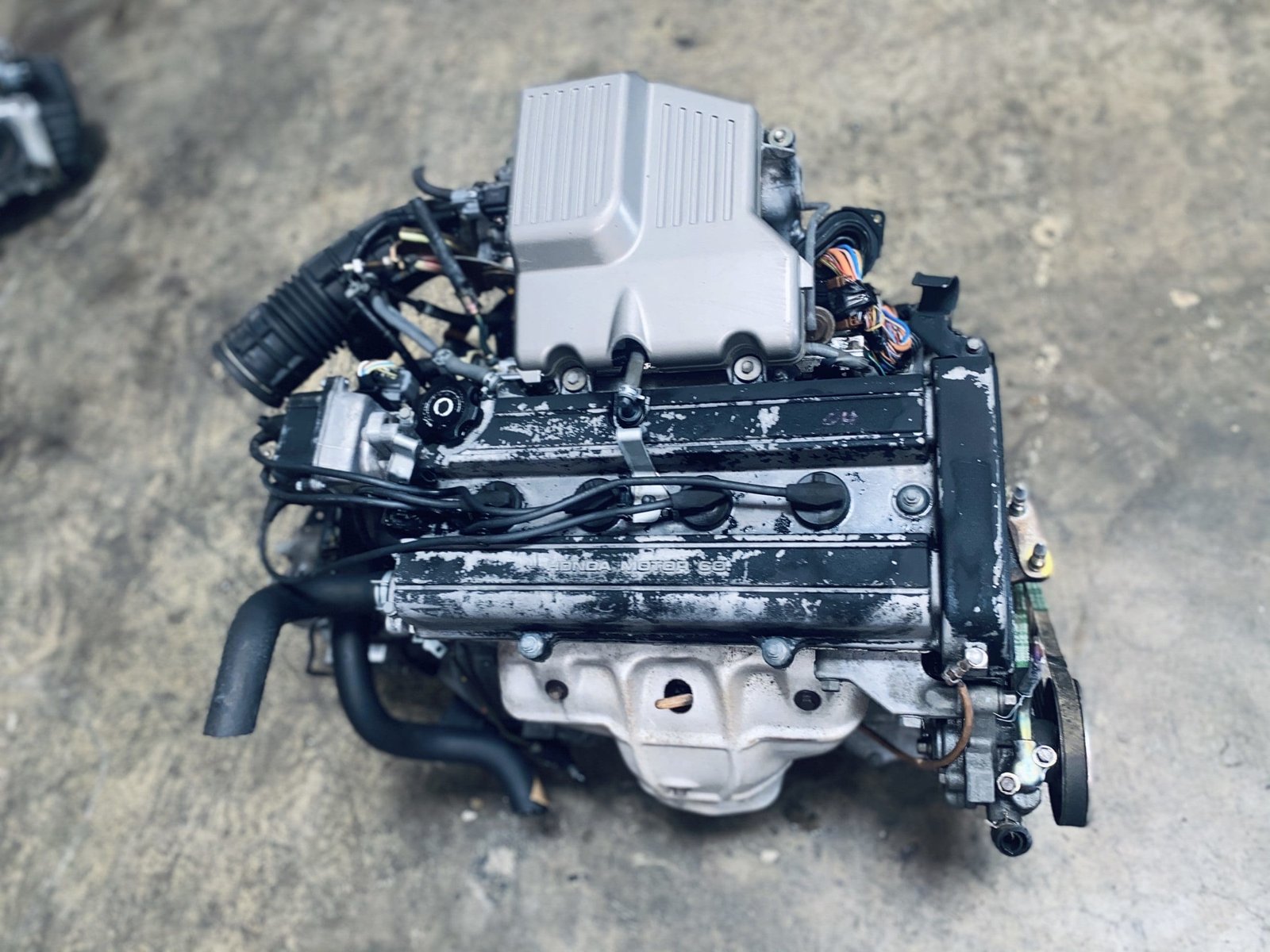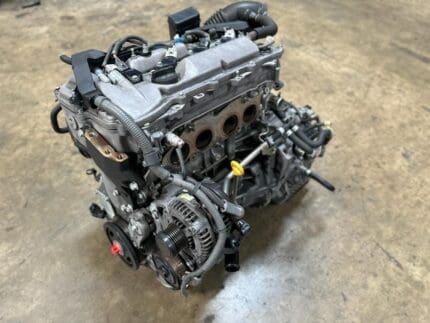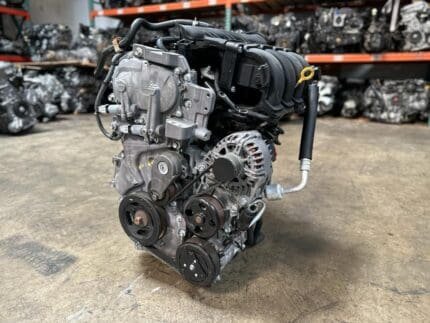JDM Honda CR-V RD1 RD2 B20B B20Z B20 Engine: An Overview
Buy JDM Honda CR-V RD1 RD2 B20B B20Z B20 Engine Motor With AWD Manual 5 Speed Transmission 4WD AWD for sale online, The Honda CR-V is one of the most popular compact crossover SUVs in the world, known for its reliability, practicality, and performance. While the CR-V has undergone multiple generations and revisions since its debut in 1995, it is the first two generations, particularly the RD1 and RD2 models, that are of particular interest to performance enthusiasts and collectors. These models were powered by the B20B and B20Z engines, which are part of Honda’s renowned B-series engine family. In this article, we’ll delve into the details of the JDM Honda CR-V RD1 RD2 models and the B20B and B20Z engines, exploring their specifications, performance, and importance in the world of JDM tuning.
The Honda CR-V RD1 and RD2: A Brief Overview
The Honda CR-V was first introduced in 1995 as a compact SUV that combined the qualities of a passenger car with the versatility of an off-road vehicle. The first generation of the CR-V, which ran from 1995 to 2001, was known by the chassis codes RD1 and RD2 depending on the market. These models were known for their spacious interiors, practical design, and front-wheel-drive (FWD) or all-wheel-drive (AWD) configurations.
The RD1 (1995-1997) was the very first model, followed by the RD2 (1997-2001), which included some styling updates and more advanced features. These models are especially appreciated by enthusiasts for their durable construction and simple, effective mechanical components. Though the focus of the CR-V was not initially on high-performance, the introduction of the B20B and B20Z engines gave these models a boost in performance, particularly in the Japanese Domestic Market (JDM).
The B20B and B20Z Engines
The B20 engine family is a series of inline-4 engines developed by Honda and widely used in various models during the 1990s and early 2000s. Among the most popular variants are the B20B and B20Z engines, which powered the Honda CR-V RD1 and RD2 models. These engines became famous for their durability, relatively easy tuning potential, and smooth performance.
B20B Engine (1995-1999)
The B20B is the first variant of the B20 engine series. This engine was found in the Honda CR-V RD1 and was one of the early versions of the B-series engines to feature VTEC (Variable Valve Timing and Lift Electronic Control). The B20B engine has the following key specifications:
- Displacement: 2.0L (1998cc)
- Power Output: Approximately 126 hp (94 kW) at 5,600 rpm
- Torque: Around 133 lb-ft (180 Nm) at 4,600 rpm
- Compression Ratio: 9.1:1
- Fuel System: Multi-point fuel injection (MPFI)
- VTEC: Yes, on the intake side
Despite its relatively modest power output, the B20B engine was praised for its smoothness and reliability. The engine featured a cast-iron block and aluminum DOHC (dual overhead cam) head, making it durable and relatively easy to maintain. The B20B also became an attractive engine swap candidate due to its robust bottom end and the potential for increased performance with aftermarket modifications.
B20Z Engine (2000-2001)
The B20Z engine, introduced in the Honda CR-V RD2, was a further refinement of the B20B and came with a few notable updates. These included slight improvements in power output and fuel efficiency, though it still maintained a similar performance level to the B20B.
Key specifications of the B20Z engine are as follows:
- Displacement: 2.0L (1998cc)
- Power Output: Approximately 130 hp (97 kW) at 5,600 rpm
- Torque: Around 133 lb-ft (180 Nm) at 4,600 rpm
- Compression Ratio: 9.1:1
- Fuel System: Multi-point fuel injection (MPFI)
- VTEC: Yes, on the intake side
The B20Z was essentially a refined version of the B20B with minor tweaks to improve fuel efficiency and emissions. Performance-wise, it offered the same characteristics—smooth power delivery, solid low-end torque, and a rev-happy nature. Like the B20B, the B20Z was highly regarded for its ease of tuning and modification, especially in the world of JDM enthusiasts.
Why Choose a B20B/B20Z Engine for a JDM Build?
The B20B and B20Z engines are incredibly popular in the JDM scene due to their versatility, durability, and potential for tuning. Many enthusiasts have opted to swap these engines into other Honda platforms, particularly the Civic and Integra, as part of performance builds.
1. Durability and Reliability
Honda’s B-series engines, including the B20B and B20Z, are known for their reliability. These engines can handle a significant amount of power when modified correctly, which is why they are a popular choice for both daily drivers and modified cars.
2. Easy to Modify
Both the B20B and B20Z engines have a strong aftermarket presence, offering numerous performance parts like camshafts, intake manifolds, pistons, and turbo kits. Enthusiasts can easily modify these engines to increase power output, which is particularly appealing in JDM tuning circles.
3. Engine Swap Potential
The B20B and B20Z engines are often swapped into lighter Honda models, such as the Civic, due to their higher displacement compared to the typical B16 or B18 engines. The increase in engine displacement offers more torque, making these swaps ideal for people looking for an engine with a bit more punch.
4. VTEC and Smooth Power Delivery
The B20B and B20Z engines are equipped with VTEC, allowing for smoother power delivery and better fuel economy at low revs, while also providing increased power at higher RPMs. This combination makes these engines highly efficient and enjoyable to drive.
Frequently Asked Questions (FAQs)
1. What is the difference between the B20B and B20Z engines?
The main difference between the B20B and B20Z engines lies in their production years and slight internal revisions. The B20Z, introduced in 2000, offered slightly better power output and marginally improved fuel efficiency. However, the two engines are very similar in terms of performance and specifications.
2. Can I swap a B20B or B20Z engine into a Civic or Integra?
Yes, both the B20B and B20Z engines are commonly swapped into lighter Honda models like the Civic and Integra. These engines offer more displacement compared to the standard B16 and B18 engines, resulting in increased torque and a more responsive driving experience.
3. Is it possible to turbocharge the B20B/B20Z engine?
Yes, both the B20B and B20Z engines can be turbocharged with proper tuning and supporting modifications. These engines have robust bottom ends and can handle the increased stress from forced induction, but it’s essential to upgrade the internals and manage the boost levels carefully to avoid engine failure.
4. How much horsepower can I get out of a B20B/B20Z engine with modifications?
With proper modifications, including intake and exhaust upgrades, camshafts, pistons, and forced induction, the B20B and B20Z engines can easily exceed 200-300 hp. Many enthusiasts push these engines even further with extensive modifications, though this may require upgrading components like the transmission, fuel system, and ECU tuning.
5. Are the B20B and B20Z engines reliable for daily driving?
Yes, the B20B and B20Z engines are reliable for daily driving when properly maintained. These engines are known for their durability and long lifespan, with many CR-V owners reporting trouble-free service for several hundred thousand miles.
Conclusion
The JDM Honda CR-V RD1 RD2 models, powered by the B20B and B20Z engines, offer a great balance of performance, reliability, and tuning potential. These engines, which are part of Honda’s legendary B-series, have earned a strong following in the JDM scene for their robustness and smooth power delivery. Whether you’re considering a B20 engine swap, tuning a CR-V, or looking to maintain a reliable daily driver, the B20B and B20Z engines continue to be highly regarded among Honda enthusiasts.







Reviews
There are no reviews yet.